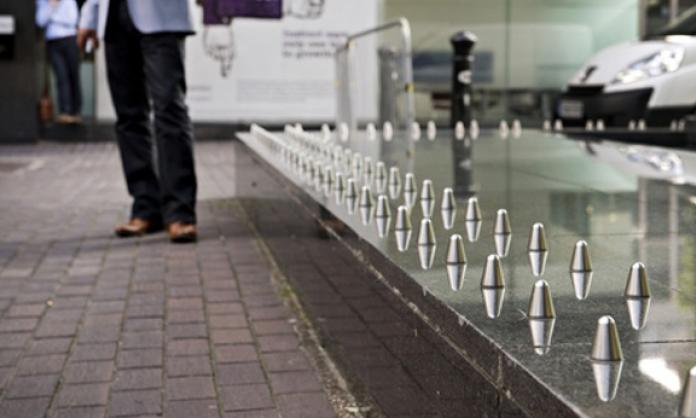Homelessness is on the rise across the country; every night roughly 8,200 people are forced to fend for themselves on the cold and dirty streets of major Australian cities.
This social crisis is not being met with more beds, welfare and compassion from those with the money, resources and legislative power to fix the problem. Instead, cities are becoming increasingly hostile spaces designed to punish and repel the poor.
When metal spikes were erected outside shop fronts in London in 2014, there was a social outcry. Local authorities had debased the homeless to a social position no higher than that of pigeons.
A week of protest removed the spikes, but in 2015 this brutal method of deterrence re-emerged in cities across the United Kingdom. Seeking a few centimetres of shelter from the rain is now harder in a country ranked among the 30 richest in the world.
Similar methods have made their way to Australia, from ubiquitous metal bars dividing park benches into three sitting room only sections to head-splitting fluorescent lighting beaming out of shop windows 24 hours a day.
In 2015, Western Australia’s Department of Culture and the Arts came under fire for installing a sprinkler system outside an arts centre in the city. High pressure spray came every hour to disperse rough sleepers in much the same way one would squirt a hose at a stray dog.
This is not the only government department to face criticism for its anti-human urban design; NSW RailCorp was forced to back down begrudgingly from its latest frontier in the war against street artists. It had planned on installing “Mosquitoes”, devices that emit a high frequency noise more likely to be audible only to younger people.
And where hostile architecture is not enough, councils use by-laws to push homeless people out of particular areas.
“Out of sight, out of mind” appears to guide the response of governments to the homelessness crisis.
These are the overt examples of cities designed to hide the poor, but there are many more insidious ways that “public” spaces are controlled and manipulated to create a sterile environment.
Skateboarding is one social activity apparently deemed unacceptable today. Skate parks have been dismantled and replaced with benches, staircases and railings, but now these too are increasingly hard to access. A whole industry has been constructed to provide subtle metal studs that break up long smooth surfaces in urban spaces.
Area Safe, a company that provides “car park and pedestrian products”, has a varied range of skateboard deterrents, pitched as “an essential part of any landscape or public space”. One option, the “architectural anti-sitting stud”, is designed to “seriously discourage skateboarders … and to discourage people that loiter and cause damage”.
It’s not just skaters who appear to threaten a neatly manicured city. Seating designed to allow people to rest for more than a few minutes is on the way out in Sydney. Benches at train and bus stops in the inner city are being replaced with awkward metal slats fixed at a 90 degree angle. You can lean for a few minutes, but don’t expect to stay more than that.
A recent redevelopment of the Pitt Street shopping mall replaced wide benches with singular cube seats stacked against each other and facing in different directions, so now a lunch break in the open air is a solitary experience for local workers.
In late 2017, a design application for the redevelopment of Queen’s Wharf in Brisbane was approved by the state government. Twelve hectares of public space will be converted into a new casino precinct, continuing the nationwide trend of privatising public spaces. The application included a “Crime Prevention Through Environment Design Report” which states:
“Furniture installed in the area should have features that minimise anti-social behaviour … [which] may include discreet solutions on seating and low walls that minimise use for skateboard tricks, and fixed armrests that prevent sleeping on the furniture.”
This follows in the footsteps of Jamie Packer’s Barangaroo, Sydney, Casino – designed exclusively for the global elite and constructed on public land with historical significance for the city’s labour movement – and Melbourne’s Federation Square, which is set to become the site of a flagship Apple store.
Cities are becoming increasingly hostile to social gatherings that don’t involve handing money over to corporate retailers. Land and cultural spaces have been speedily privatised, like many other public services, and a sanitised vision of the city is enforced with subtle design features and cops ready to move people along.








